Exploring the Diverse Functions of Windmills
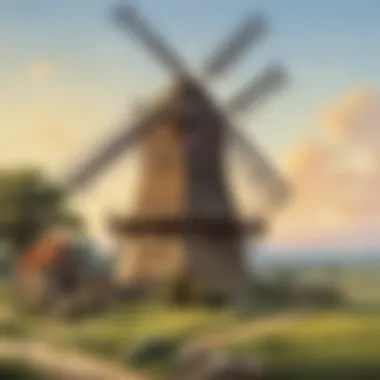
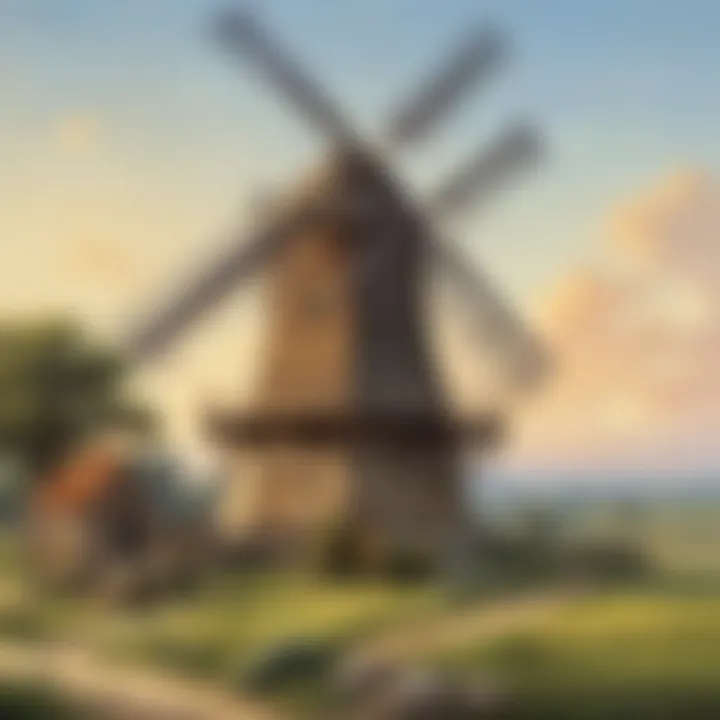
Intro
Windmills have swirled their way into our history and landscapes, transforming how we harness nature's power. Not merely relics of the past, these impressive structures have evolved significantly over the years. They turned from simple machines for grinding grain to cutting-edge technology that powers our homes and industries with renewable energy. In this exploration, we'll uncover their diverse functions, look at how they evolved, and see the impact they have on our environment today.
Science Fun Facts
Ever been curious about windmills? Here are some captivating tidbits:
- Old But Gold: The earliest windmills known to humankind date back to around 500-900 AD in Persia. Can you imagine living back then?
- Two Types: There are typically two main types of windmills – horizontal and vertical. Each offers unique advantages for different tasks.
- Large and Small: Modern wind turbines can reach heights of over 400 feet! That’s taller than most skyscrapers. Now that’s a tall order for gathering wind!
"Wind and water are the best works of nature, as the wind causes everything to move!"
Interesting Trivia and Facts
- In the Netherlands, windmills were famously used to pump water out from low-lying areas, helping to reclaim land from the sea.
- The word 'mill' originates from the Latin word 'mola', meaning to grind.
- Wind power is now one of the fastest-growing cheap sources of energy across the globe, with countries investing heavily in harnessing this free and clean resource.
Quirky Science Stories
In 1480, Leonardo da Vinci designed some impressive windmills, although none were built during his time. It wasn't until centuries later that his ideas were finally put to work! Imagine if people had embraced his designs then; we might have seen wind-powered cities long ago!
Discover the Wonders of Science
There’s a lot more to learn about these fascinating devices that have shaped our world. Here are some scientific concepts you can dive into:
- Aerodynamics: Understanding how wind moves around objects plays a crucial role in designing effective windmills.
- Energy Conversion: Learn how wind energy turns into mechanical energy and then into electricity. It's a wonderful dance of physics!
Educational Videos and Animations
If you prefer to see these mechanisms in action, platforms like YouTube have informative videos that demonstrate how windmills work. Check channels like "Crash Course Science" or "SciShow Kids" for visuals that bring these concepts to life!
Real-Life Applications of Science
Windmills are not just for show. They offer solutions for:
- Energy Generation: Powering homes with electricity harvested from the wind.
- Water Management: Assisting with irrigation and drainage in agriculture.
- Sustainable Practices: Contributing to eco-friendly farming and sustainability projects.
Science Quiz Time
Let’s have a little fun with what you’ve learned! Here are some questions:
- What region is known for its early windmills?
- Which process do windmills utilize to power homes?
- What is the main material used in building modern wind turbines?
Science Experiment Showcase
Let’s try a fun experiment at home!
Creating a Simple Windmill:
- Materials Needed:
- Instructions:
- Safety Tips: Be careful while handling scissors and the pin.
- Paper
- Straw
- Scissors
- A pin or a thumbtack
- Cut the paper into a square shape.
- Cut slits toward the center from each corner, but don’t cut all the way.
- Fold every other flap to the center and secure with the pin.
- Attach the straw at the base and blow on the blades!
This simple windmill will show you how wind can actually create movement, just like the enormous machines doing so much work today!
By searching and learning more about windmills, not only do you discover their purposes, but you also gain insight into the vast world of renewable energy and practical science. Keep exploring!
Historical Context of Windmills
Windmills have been pivotal in the evolution of human technology and energy production. Understanding their historical context provides insight into not just their engineering, but also how they influenced various aspects of life through the centuries. Windmills have served multiple purposes, from grinding grain to pumping water and generating electricity. The growth and diversification of windmill technology highlight not only the ingenuity of past civilizations but also the adaptability in addressing societal needs through renewable energy.
Early Windmill Designs
The story of windmills begins with early designs that took root in the Middle East around the 7th century. These first iterations were simple structures made primarily of wood and cloth. The Persian windmill, for example, had vertical blades and was primarily used for grinding grain. This design was not just functional; it adapted to the climatic conditions, utilizing the strong winds of the region. The simple yet effective mechanism of converting wind energy into mechanical power laid the groundwork for future innovations.
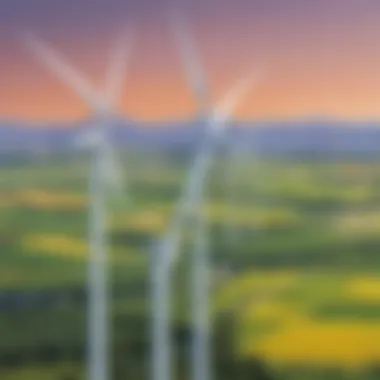
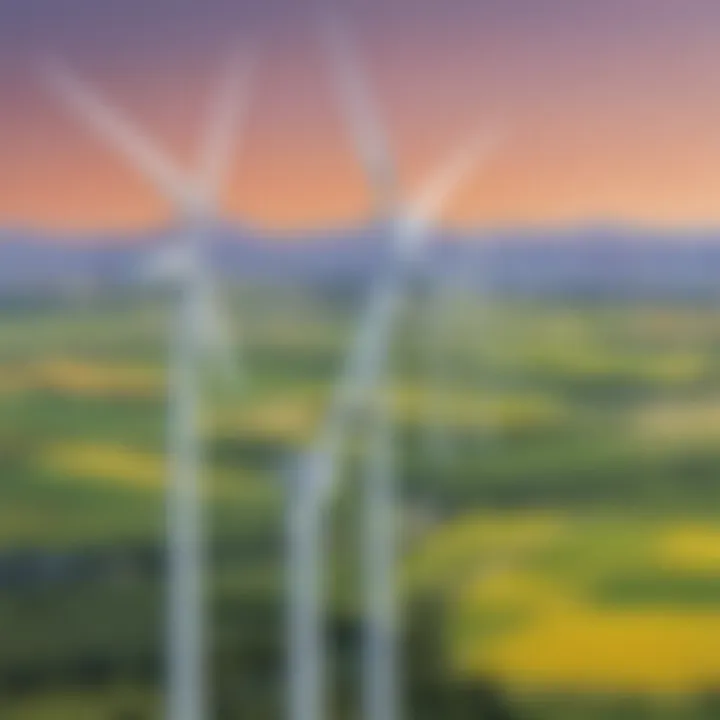
Of note is the post mill, which emerged in northern Europe by the late 12th century. With a rotating cap allowing the mill to be turned into the wind, this design made it more versatile. It shows how communities early on not only harnessed nature but did so with careful consideration of their environment. The advent of windmills marked a transition phase; showcasing that people were equipped to solve practical problems with the resources they had available.
Windmills in Different Cultures
As windmill technology spread, it was embraced differently across various cultures, each adding unique elements. For instance, in the Netherlands, the iconic Dutch windmill became integral to land reclamation, not just milling grains. They were often used to pump water, draining wetlands to create arable land, a clear indication of innovation driven by necessity. The sails evolved to accommodate conditions from the flat Dutch landscape to the mountainous terrains of Persia.
Further east, Chinese windmills took on distinctive styles with designs meant for irrigation, showcasing the adaptability of windmill technology across diverse climates and needs. In these various forms, windmills have not only functioned as machines but also as symbols of community resilience, ingenuity, and the quest for sustainability.
The Transition from Manual to Mechanical Power
The shift from manual labor to mechanization with windmills is a fascinating chapter in energy history. Early agricultural societies relied heavily on human and animal power for tasks like grinding grain. The introduction of windmills allowed for a significant leap in efficiency. Imagine a time when a handful of workers could accomplish what previously would require much more time and resources.
With the advent of mechanical power, the landscape changed dramatically. The wind powered machinery began to reshape industries, leading to increased productivity. This was not merely a switch from one type of power to another but instead represented a paradigm shift toward embracing natural forces in daily life.
The transition to mechanical wind power was like trading a horse for a new car. It represented not just an upgrade in efficiency but opened doors to new opportunities.
As the 19th century dawned, this transition inspired further innovations, leading to the modern wind turbines we see today. The history of windmills exemplifies how a simple idea, ingeniously executed, can propel entire societies into new eras of productivity and sustainability.
Mechanics of Windmills
The mechanics of windmills lie at the heart of understanding how these remarkable machines operate. While many recognize windmills as timeless structures that dot the landscape, often seen spinning gracefully in the breeze, few consider the intricate machinery inside that brings them to life.
In essence, the mechanics of a windmill capture wind energy and convert it into mechanical energy, which can be harnessed for various practical purposes. Understanding these mechanics can lead to greater appreciation of both historical and modern applications. This topic is especially relevant today, as society seeks sustainable energy solutions amid growing concerns about environmental impact and fossil fuel depletion.
Basic Components of a Windmill
A windmill is made up of several essential components, each playing a vital role in its functionality. The primary parts include:
- Blades: These are the sails of the windmill, designed to catch the wind and create lift, much like an airplane wing. Depending on the windmill type, blades may vary in shape and size.
- Rotor: This component connects to the blades and spins when the wind blows. The rotor is crucial as it translates the wind’s kinetic energy into rotational energy.
- Shaft: The shaft connects the rotor to the hub, and it transfers the rotational energy from the rotor to the machinery inside. This is often where the magic really begins—converting wind power into usable energy.
- Gearbox: Typically, windmills use a gearbox to increase the rotational speed of the shaft, allowing for greater energy output. This enhancement is particularly important in modern turbines, which operate at different speeds based on wind conditions.
- Generator: Often seen as the powerhouse of the windmill, the generator converts mechanical energy from the shaft into electrical energy. This is what ultimately powers homes or feeds into the grid.
These components work together seamlessly to capture and convert wind energy effectively. Each piece is designed with care and precision, reflecting an understanding of physics and design that has evolved over centuries.
How Wind Energy is Captured
The process of capturing wind energy begins with the wind interacting with the blades of the windmill. When the wind blows, it alters air pressure, creating a difference in pressure on either side of the blades.
- The shape of the blades allows them to create lift, similar to how wings help an airplane to soar.
- When the blades catch enough wind, they begin to spin, turning the rotor connected to them.
- The power derived from the wind changes based on factors like the speed and direction of the wind. It’s fascinating to note that windmills can adjust their blade pitch or angle to optimize wind capture, ensuring they harness as much energy as possible.
Understanding how wind energy is captured can motivate young innovators to think about renewable energy solutions. They may see how harnessing the wind can power not just homes, but entire communities, reducing our reliance on traditional fossil fuels.
Conversion of Mechanical Energy
Once the wind’s mechanical energy is captured through the spinning of blades, the next crucial step is conversion.
This energy travels down the shaft to the gearbox, which plays a significant role in magnifying the energy output. The gears inside the gearbox increase the rotational speed, allowing the generator to produce electricity effectively.
- With the generator now spinning faster, it converts mechanical energy into electrical energy through electromagnetic principles.
- This conversion process is what makes windmills valuable as an energy source, shedding light on the efficiency of harnessing natural forces.
Ultimately, the journey from wind to electricity illustrates a remarkable transformation of energy states. As society moves towards cleaner energy options, understanding this process becomes increasingly relevant for future generations.
"The wind is a part of nature, and its energy can be harnessed to sustain life in countless ways."
Through these insights, one can appreciate the elegance of windmills, from simple designs of old to the sleek, modern turbines we see today, informing further innovation in the field of renewable energy.
Types of Windmills
Understanding the various types of windmills is essential for grasping their wide range of applications and benefits. These structures are not just relics of the past; they continue to influence various industries today. Their designs reflect both the technological advances of their time and the specific needs they aim to satisfy. Each type of windmill comes with its own unique features, advantages, and considerations based on the context in which it is utilized.
Traditional Windmills
Traditional windmills have been part of human history for centuries, predominantly seen in rural landscapes. These structures, often characterized by large sails or blades, harness wind energy for various practical uses. Originally designed for milling grain, they made farming much easier and more efficient. The large sails catch the wind, turning the mill's internal gears to grind wheat into flour. This not only provided sustenance but also supported local economies by enabling trade.
Key Features of Traditional Windmills:
- Sail Design: Usually constructed with wooden blades, allowing for substantial grip on wind energy.
- Structure: Built from local materials, these windmills are often simplistic yet effective.
- Community Centers: Historically, they served as meeting points for farmers, fostering community spirit.
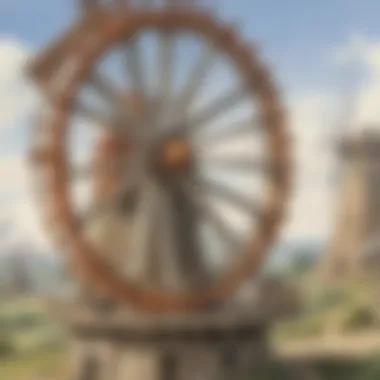
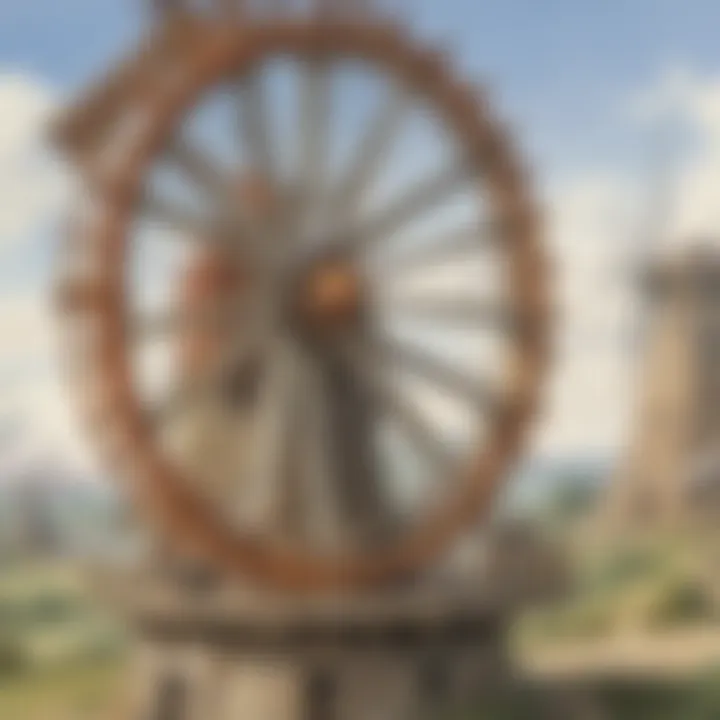
Modern Wind Turbines
In contrast, modern wind turbines are far more advanced and impactful in today's energy landscape. They have shifted the focus from manual labor to mechanical efficiency, capable of generating electricity. The sleek, tall designs are now commonplace in fields and offshore locations, standing as giants in renewable energy production.
Advantages of Modern Wind Turbines:
- High Efficiency: Equipped with advanced aerodynamic blades that capture wind energy more effectively.
- Scalability: They can be deployed individually or in large wind farms, enhancing energy output.
- Reduced Carbon Footprint: Unlike traditional windmills, they help significantly in lowering greenhouse gas emissions.
Comparison of Designs
When comparing traditional windmills with modern wind turbines, one can notice stark differences that highlight their evolution and adaptation to societal needs.
Comparison Breakdown:
- Purpose: Traditional windmills were primarily for mechanical tasks like milling, whereas modern turbines focus on energy generation.
- Design Efficiency: Modern turbines have streamlined designs, optimized for maximum energy capture, while traditional windmills have bulkier structures focused on manual tasks.
- Energy Output: The energy produced by a single modern wind turbine far surpasses that of multiple traditional windmills.
"The evolution from traditional windmills to modern turbines illustrates humanity’s constant adaptation to harness natural resources more efficiently and sustainably."
Using various types of windmills enables us to appreciate the marriage between innovation and nature. From the grain fields to the power lines, understanding these structures can inspire a deeper interest in renewable energy solutions for both young learners and adults alike.
Applications of Windmills
Windmills hold a significant place in our world, transforming the way we think about energy and utility. They serve as a testament to human ingenuity and our commitment to harnessing natural forces for practical use. The applications of windmills span various fields, each presenting unique benefits and opportunities. Understanding these applications is crucial for appreciating their role in both historical contexts and contemporary practices.
Agricultural Uses
Windmills have a long-standing history in agriculture, primarily for grinding grain. Picture this: a farmer in the early morning, the sun just peeking over the horizon, relying on the gentle whir of a windmill to grind wheat into flour. The wind’s power made food production more efficient at a time when muscle strength was the primary resource. Today, these structures have found modern applications in irrigation and other farming practices.
Windmills support agricultural activities by pumping water from underground aquifers to irrigate crops. This is especially valuable in arid regions where water scarcity can spell disaster for farmers. By using wind energy to power pumps, farmers can maintain their fields sustainably while reducing their reliance on fossil fuels. It's akin to having a silent partner working alongside nature.
Energy Generation
As the world shifts toward sustainable energy, the role of windmills in generating electricity becomes even more critical. Modern wind turbines, which are essentially advanced windmills, convert kinetic energy from wind into electrical energy. This conversion is not only efficient but also incredibly important in combating climate change.
The size of these modern turbines can be astonishing. They often tower several hundred feet tall, with blades spinning gracefully to harness the wind. According to reports, a single turbine can generate enough power to supply hundreds of homes, thus making a significant dent in relying on nonrenewable energy sources.
The rise of wind farms—clusters of wind turbines—can be seen as a modern-day frontier for energy production. They are popping up all over the globe, demonstrating how nature can be our ally in energy independence. With the pressing need to reduce greenhouse gas emissions, the importance of wind energy cannot be overstated.
Water Pumping Systems
Water pumping is another critical application of windmills, having roots far back in history. Commonly known as wind pumps, these devices are particularly useful in areas where access to electricity is limited or non-existent. Imagine a small village where electricity is a luxury, yet windmills stand tall, their sails harnessing the wind to pump water efficiently.
In many countries, particularly those with farming as a central industry, wind pumps provide water for livestock and irrigation, acting as an essential tool for rural communities. Unlike traditional electric pumps, wind pumps operate independently, relying solely on wind. They offer a low-maintenance, cost-effective solution for drawing water from wells or reservoirs.
In places like Africa and parts of Asia, these pumps can dramatically improve quality of life and agricultural productivity. It’s as if windmills are modern-day guardians, ensuring that communities have water not just to survive but to thrive.
Windmills have not only transformed the way we produce food and energy but also provided innovative solutions for water scarcity.
The applications of windmills integrate seamlessly into our lives, supporting agriculture, enhancing energy production, and providing crucial water resources. It’s this multifaceted utility that underscores their ongoing significance in both historical and contemporary contexts.
Environmental Impact
The influence of windmills on the environment is a critical aspect of their existence and operation. Understanding this impact not only helps grasp the purpose of windmills but also opens our eyes to their role in the larger ecological system. This section will examine various environmental themes that windmills emphasize, including sustainable energy solutions, the effect on wildlife, and land use considerations. Each of these elements plays a significant part in shaping the dialogue around wind energy, highlighting both benefits and challenges.
Sustainable Energy Solutions
Windmills are often viewed as a beacon of sustainable energy solutions. They harness wind, a free and abundant resource, to produce clean energy. Unlike fossil fuels, which release harmful pollutants into the air, wind energy is virtually pollution-free. When we take a closer look, it becomes clear how windmills contribute positively to our environment.
- Reduction of Carbon Footprint: By using wind power, we can significantly decrease our reliance on traditional energy sources that emit greenhouse gases. This contributes to slowing climate change.
- Renewable Resource: Wind is an inexhaustible source of energy, meaning windmills can produce electricity as long as the wind blows.
- Low Water Consumption: Unlike coal or nuclear energy production, wind energy requires minimal water. This conservation becomes increasingly vital in areas facing water scarcity.
Windmills exemplify how technology and nature can coexist harmoniously. They provide a path towards reducing the environmental consequences of traditional energy production, making them a cornerstone of the renewable energy landscape.
Impact on Wildlife
While windmills provide substantial environmental benefits, they also pose challenges to local wildlife. The spinning blades can sometimes inadvertently harm birds and bats, raising concerns among conservationists.
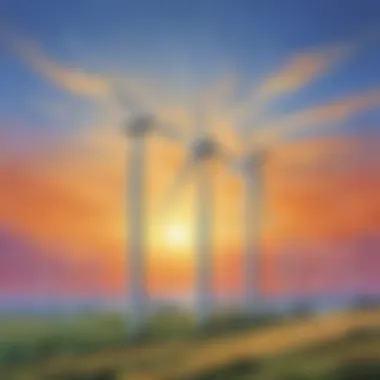
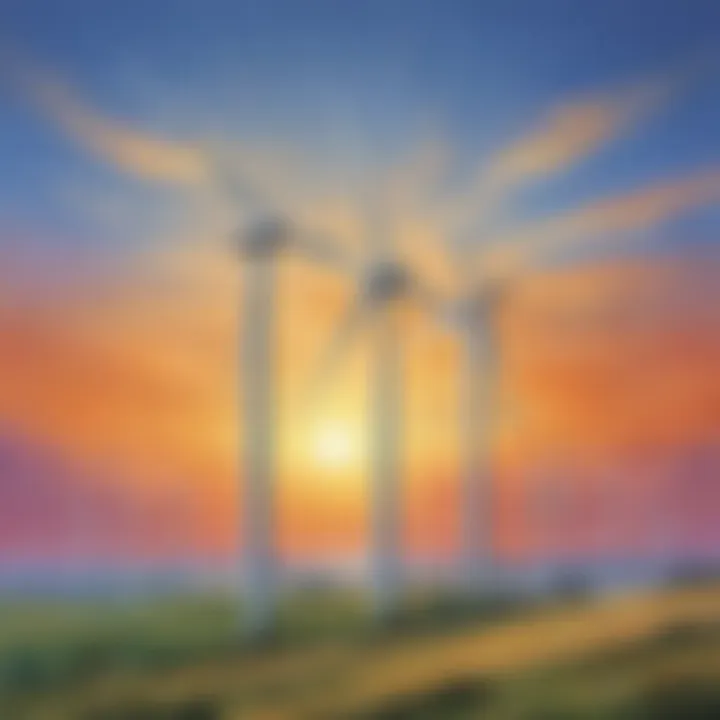
- Bird Mortality: Studies have shown that birds, particularly those that migrate, can collide with wind turbine blades. However, the strategic placement of windmills and advances in turbine technology are being developed to minimize these risks.
- Bat Sensitivity: Bats are particularly susceptible to injuries from turbines. They rely on echolocation, and the turbines can be dangerous especially in regions where bats thrive. Monitoring and adaptive management strategies can help mitigate these dangers.
- Habitat Disruption: Installing wind farms could disrupt local ecosystems, particularly if they encroach on wildlife habitats. Careful planning and environmental assessments are crucial in this regard.
Efforts are actively made to balance wind energy development with wildlife conservation, striving to protect our natural allies while harnessing renewable energy.
Land Use Considerations
With wind energy on the rise, land use becomes a pertinent conversation. The footprint of wind farms can affect agricultural lands, open spaces, and natural habitats.
- Multi-Use Land: Interestingly, areas used for wind energy can often still support agriculture. Farmers may plant crops or graze livestock in between turbines, ensuring that land doesn’t lie dormant.
- Location Challenges: Identifying suitable locations for wind farms requires considerations about land use, access to electrical grids, and proximity to populated areas. These elements impact landowners, local communities, and wildlife.
- Visual and Noise Impact: Some land users and nearby communities express concerns about the visual aspect of windmills and the noise they generate. Addressing these concerns with open dialogue can lead to better-integrated solutions.
The land use dynamics of windmills underline the importance of strategic planning and community involvement. By carefully considering these factors, it’s possible to implement wind energy projects that respect both the environment and local interests.
"Embracing wind energy isn’t just about generating power; it’s about redefining our relationship with nature for future generations."
Through these insights, we can see how the environmental impact of windmills is an intricate web of benefits and challenges. By prioritizing sustainable practices and engaging in constructive discussions, society can navigate these waters and truly embrace the purpose of windmills in a changing world.
Economic Aspects of Windmills
The economic aspects of windmills play a crucial role in their adoption and implementation. They are not just old machines turning in the wind; they are becoming essential players in today's energy market. Understanding the economics surrounding windmills helps to grasp their viability, potential benefits, and challenges associated with their use in modern society.
Cost of Installation
When considering windmills, the cost of installation often emerges as a primary concern for both businesses and individuals. Setting up a windmill requires not just the physical structure but also permits, infrastructure, and maintenance considerations. In rural areas where wind is a constant companion, the price can vary significantly. For instance, installing a small wind turbine suited for a household might run anywhere from twenty thousand to fifty thousand dollars. Larger, industrial-sized turbines can cost hundreds of thousands, especially when factoring in the technology involved in harnessing wind power effectively.
While these upfront costs may seem daunting, they are often countered by long-term benefits. Wind turbine installation can dramatically lower electricity bills, providing a return on investment that spans several years. Furthermore, government incentives and subsidies can alleviate some of the initial financial burdens, making these installations more accessible.
Energy Cost Savings
The real beauty of windmills shines when we discuss the energy cost savings they provide. Once a windmill is operational, the energy it generates can significantly cut down monthly utility expenses. Unlike fossil fuels, which are notorious for fluctuating prices, wind energy tends to be much more stable, often leading to substantial savings over time.
The average household could save as much as several hundred dollars annually on electricity costs, depending on the local wind strength and the efficiency of the windmill installed.
The shift toward utilizing wind energy is also helping to mitigate the environmental impact of traditional energy sources, making it appealing not just economically but also ethically. Additionally, the savings become even more pronounced when considering the rising energy costs tied to non-renewable resources.
"Wind energy could be a game-changer in our quest for affordable energy."
Job Creation in Renewable Energy Sector
Another crucial economic aspect lies in the job creation associated with the wind energy sector. As more windmills dot the landscape, a myriad of job opportunities arises in various elements of the industry. This includes not just the manufacturing and installation of wind turbines, but also the roles in maintenance, research, and even administrative positions overseeing projects.
In many regions, wind energy jobs have seen significant growth. These jobs often offer good wages and benefits, making them attractive options for those looking for stable employment. Transitioning to wind power not only supports the environment but also aids local economies by providing positions that can’t be outsourced easily.
Overall, windmills symbolize not just a leap into renewable energy but their economic aspects hint at a brighter, more sustainable future for both individuals and communities alike.
Future Trends in Wind Energy
As we gaze into the horizon of renewable energy, wind energy shines bright. The future trends in this sector are pivotal, not just for harnessing natural resources but also for shaping sustainable practices across industries. Recognizing these trends leads us to consider technological advancements, global reach, and the roadblocks that lie ahead. In a world where energy sustainability is paramount, understanding these elements is critical for learners, parents, and caregivers alike.
Technological Innovations
Innovative technologies are a game changer in the wind energy landscape. Think back to how far we’ve come from the simple windmills used in farming to today’s sleek wind turbines that tower over landfills and fields. Some key advancements include:
- Lighter Materials: Modern turbines use lightweight materials that enhance efficiency and durability. These new designs make it easier to manufacture and transport equipment, facilitating quicker deployments.
- Smart Grids: With the introduction of smart grids, wind energy can now be distributed more effectively. They allow energy producers to make real-time adjustments based on demand and availability, enhancing overall energy reliability.
- Vertical-Axis Turbines: These futuristic turbines are proving effective in urban areas. Their design reduces noise and enhances aesthetics, making them suitable for cities where space is limited.
These innovations not only make wind energy a cleaner choice but also ensure it remains competitive with traditional energy sources.
Potential for Global Expansion
The possibilities for wind energy are practically limitless. Across continents, countries are eager to tap into this renewable resource. The advancements in technology mean that wind energy is becoming more accessible to different regions. Here’s how:
- Emerging Markets: Countries such as India and Brazil are investing heavily in wind power, seeing it as an opportunity for economic growth while conserving their environments.
- Offshore Wind Farms: The potential for offshore wind energy is substantial. With large bodies of water like oceans and seas, vast areas can be utilized, reducing land competition.
- Community-Based Projects: Small towns and local communities are increasingly leaning towards wind generation systems. This type of grassroots movement not only empowers people but also creates jobs locally.
Ultimately, as nations aim for cleaner energy solutions, wind energy holds value on a global scale.
Challenges Ahead
But it is not all smooth sailing. As much as the future appears promising, wind energy faces notable challenges:
- Intermittent Nature of Wind: Unlike coal or gas, wind doesn’t blow all the time. This variability necessitates backup systems to ensure a constant energy supply.
- Infrastructure Needs: In many areas, existing infrastructure is inadequate for transporting wind energy. Investments are essential to upgrade grids to accommodate this renewable source.
- Resistance from Local Communities: Sometimes, there’s pushback from residents about new wind farms. Concerns range from impacts on local wildlife to changes in landscapes.
"The journey of wind energy from a basic concept to an integral part of our energy infrastructure showcases its resilience and adaptability."
The future of wind energy is laden with promise, yet it is essential to address these issues to fully harness its potential. By embracing innovative technologies, expanding global initiatives, and being aware of challenges, young minds can play a crucial role in shaping the adventure that wind energy promises to be.







